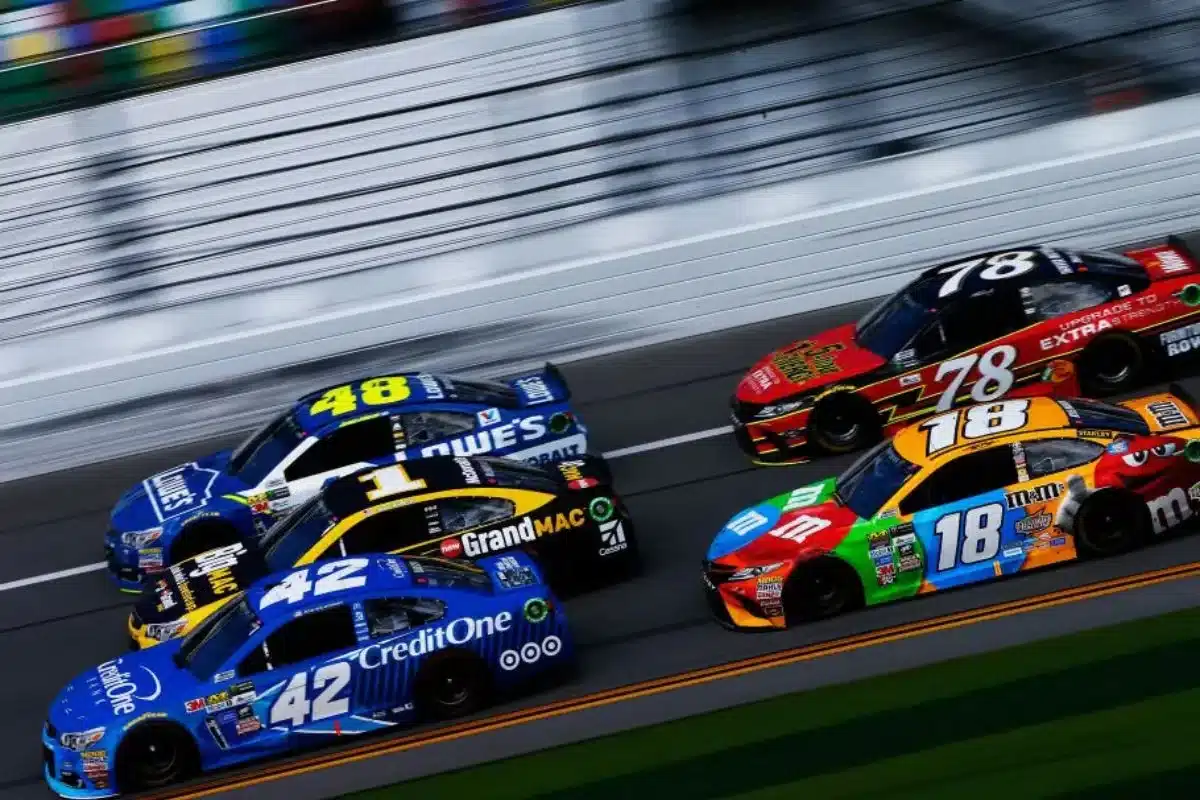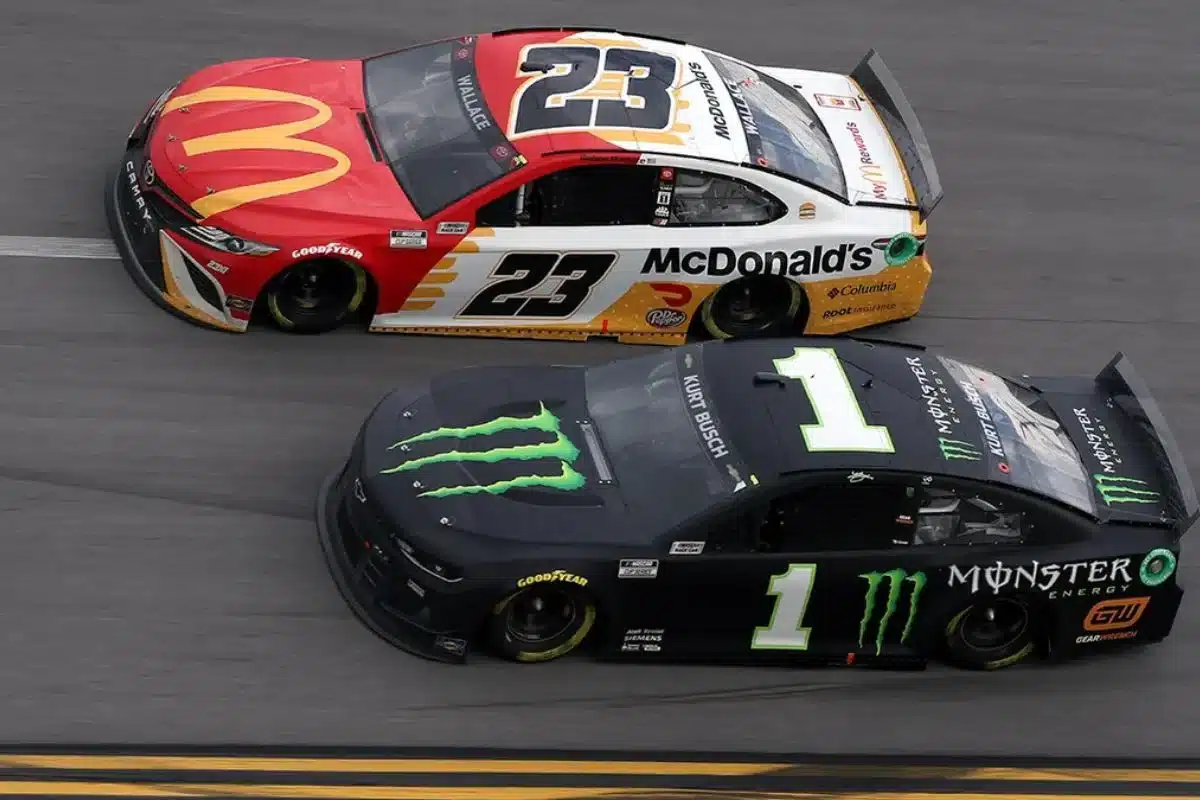NASCAR Sponsorship Secrets: In NASCAR sponsorships, the interplay between performance clauses and partnerships is essential, with sponsors seeking brand visibility and success on the track. Insights from Joe Gibbs Racing underscore how manufacturer agreements and incentives tied to on-track achievements shape these partnerships. The impact of NASCAR’s Charter System has significantly altered the financial landscape, incentivizing competitiveness and compliance. Understanding the dynamics of performance clauses and manufacturer agreements is key to unraveling the secrets behind successful NASCAR sponsorships and their impact on team performance and financial stability.
Key Takeaways
- Sponsorship contracts often include performance clauses to ensure teams meet specific on-track achievements.
- Performance clauses in NASCAR sponsorships are strategic tools to align team success with sponsor objectives.
- Understanding performance clauses is crucial for maintaining strong partnerships in NASCAR.
- Incentives tied to on-track performance in agreements drive team competitiveness and success.
- Performance clauses shape NASCAR sponsorships, linking financial support to on-track results.
Sponsorship and Performance in NASCAR
In the competitive sport of NASCAR, the relationship between sponsorship and performance is a pivotal dynamic that plays a vital role in the success of racing teams. Sponsorship deals in NASCAR are not just about placing logos on cars; they are strategic partnerships that can make or break a team’s season. Sponsors provide essential financial support, which enables teams to invest in cutting-edge technology, top-tier talent, and necessary resources for competitiveness. In return, sponsors expect exposure, brand visibility, and a positive association with a successful racing team.
However, the nature of NASCAR is unpredictable, with race outcomes influenced by numerous variables such as track conditions, weather, and split-second decisions by drivers. This unpredictability raises the question: are sponsors flexible with their performance expectations? While sponsors aim to associate with winning teams, they also understand the inherent risks in motorsports. Many sponsorship contracts in NASCAR do include performance clauses that outline certain expectations regarding on-track results, exposure, and conduct. These clauses serve as a benchmark for teams to meet certain performance metrics, ensuring that sponsors receive a return on their investment.

Navigating the delicate balance between sponsorship commitments and on-track performance is a strategic challenge for NASCAR teams, requiring a blend of skill, adaptability, and professionalism to maintain successful partnerships in the dynamic world of motorsports.
Insights from Joe Gibbs Racing
What unique perspectives can be seen from Joe Gibbs Racing regarding the dynamics of sponsorship in NASCAR? Joe Gibbs Racing, under the leadership of Dave Alpern, provides valuable insights into the intricate relationships between teams, sponsors, and manufacturers within the NASCAR sponsorship landscape. Here are some key takeaways from Joe Gibbs Racing:
- Manufacturer Agreements: Joe Gibbs Racing highlights the significance of manufacturer agreements in the domain of NASCAR sponsorships. These agreements may differ from typical sponsor contracts by including performance clauses that can influence the team’s incentives based on playoff rounds or championship accomplishments.
- Incentives Based on Performance: Unlike traditional sponsorships where performance clauses are uncommon, Joe Gibbs Racing’s experience emphasizes that manufacturer agreements often incorporate incentives tied to the team’s on-track achievements. This approach aligns the team’s success with the manufacturer’s objectives, creating a mutually beneficial relationship.
- Contractual Dynamics: Through Joe Gibbs Racing’s perspective, it becomes evident that understanding the contractual dynamics between teams, sponsors, and manufacturers requires a fine understanding of the sport’s intricacies. The team’s experiences shed light on the complexities involved in balancing the sponsor’s expectations, performance metrics, and manufacturer’s requirements to guarantee a successful partnership.
Joe Gibbs Racing’s insights show the multi-faceted nature of NASCAR sponsorships, where performance clauses and manufacturer agreements play a pivotal role in shaping the dynamics of these partnerships.
“It’s not uncommon, particularly for the manufacturer agreements, whether you’re a Toyota, Chevy or Ford, many of those have performance clauses in them that may give you incentives based on what round of the playoffs you make it to or in particular of the championship,” explained Alpern. “Which is similar to the way some of our contracts with drivers (and) crew chiefs also include similar incentive bonuses if they reach certain milestones in the season.”
Impact of NASCAR’s Charter System
The implementation of NASCAR’s Charter System has fundamentally altered the financial structures governing team earnings and payouts in the sport of stock car racing. Prior to the Charter System, teams relied on race finishes as the primary source of income. However, with the introduction of charters, a fixed payout system based on performance over a three-year period has been established. This shift has presented a new era where teams, both charter and non-charter, have a more stable financial foundation.
For charter teams, the fixed payouts provide a level of financial security that was previously absent in the sport. These teams can now forecast their earnings based on their historical performance, allowing for better long-term planning and investment. On the other hand, non-charter teams, while not receiving the same fixed payouts, still benefit from a percentage of the overall payout pool. This competitiveness based on incentives ensures that all teams have a stake in the financial success of the sport.
View this post on Instagram
Charter Rules and Consequences
The parameters set forth by NASCAR’s Charter System not only define the financial structure for teams but also establish strict rules and consequences for those failing to meet performance and financial standards over an extended period of time.
Charter teams faces potential consequences for consistent poor performance or financial insolvency must be aware of the following:
- Teams ranking in the bottom three for owner points over three consecutive years risk losing their charter, impacting their financial stability and status within the sport.
- If a team loses its charter, it may be offered to other teams, with associated funds directed to the season-ending points fund.
These rules and consequences underscore the importance of maintaining a competitive edge in NASCAR. The threat of losing a charter can have profound implications not just for the team’s financial standing but also for its overall status and future prospects in the sport. Teams must navigate these regulations with precision, ensuring they meet the performance and financial benchmarks set forth by NASCAR to secure their long-term viability.

News in Brief
The connection between sponsorship and performance in NASCAR is intricate and interconnected. Insights from Joe Gibbs Racing illuminate the significance of fulfilling performance clauses in sponsorship agreements.
The influence of NASCAR’s Charter System on teams and sponsors cannot be overstated, as the regulations and repercussions linked to the charters have notable implications. Knowing about these dynamics is vital for both teams and sponsors in maneuvering the competitive landscape of NASCAR.
Our Reader’s Queries
Q. How much do sponsors pay to be on a NASCAR?
A. Securing a primary sponsorship in NASCAR entails various considerations, from team success to driver appeal and the sponsor’s engagement preferences. However, one thing is clear: it demands a substantial financial commitment. Estimates suggest that the starting point for such investments begins around $35 million annually.
Q. How do sponsorships work in NASCAR?
A. In NASCAR, the primary sponsor holds the reins when it comes to the car’s design, commonly known as the “paint scheme,” “paint out,” or “livery.” This design provides the sponsor with a platform to display its brand identity and logo, aiming to captivate fans both on television and at the event.
Q. Who is NASCAR’s main sponsor?
A. NASCAR’s four Premier Partners—Busch Beer, Coca-Cola, GEICO, and Xfinity—play a pivotal role in the championship series. Determined by a points system, finish placement and laps led dictate points awarded. The season is split into two segments, each contributing to the overall championship standings.
Q. What are the benefits of being a NASCAR sponsor?
A. A primary NASCAR sponsorship encompasses fundamental components like logo placement on the hood, rear quarter panels, and TV panel of the vehicle, along with PR and social media backing. It also entails sponsor’s seats in the pit box, 6-8 team garage hot passes per race, hospitality prospects, and driver appearances
ALSO READ: NASCAR Sponsorship Controversy: Insider Sparks Fierce Debate!
